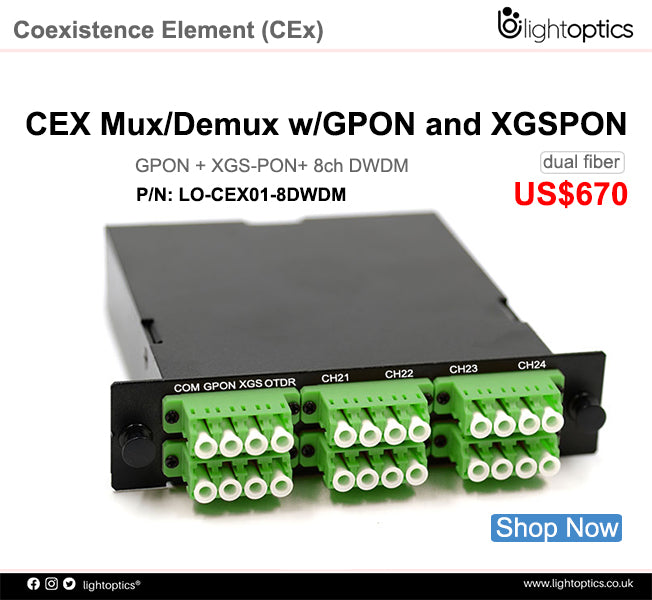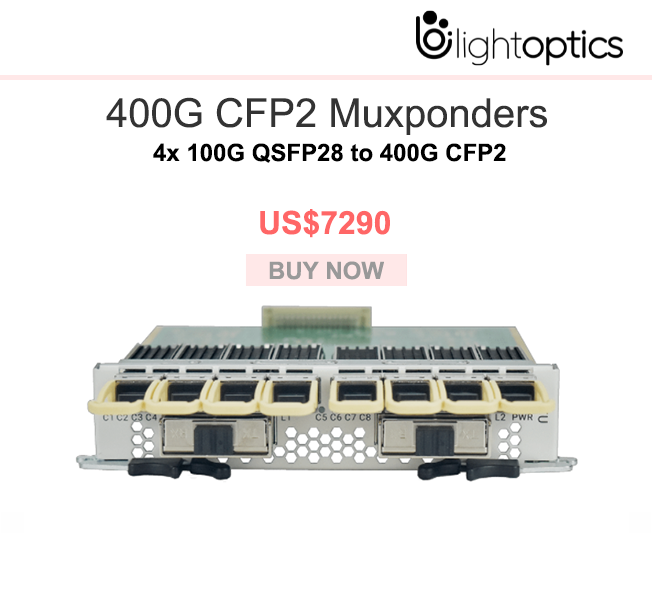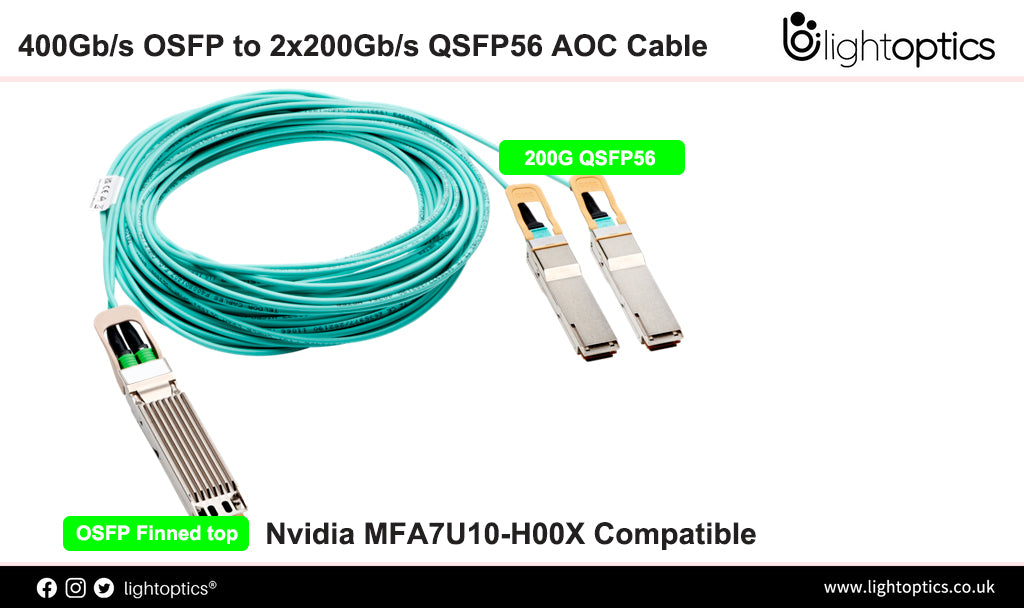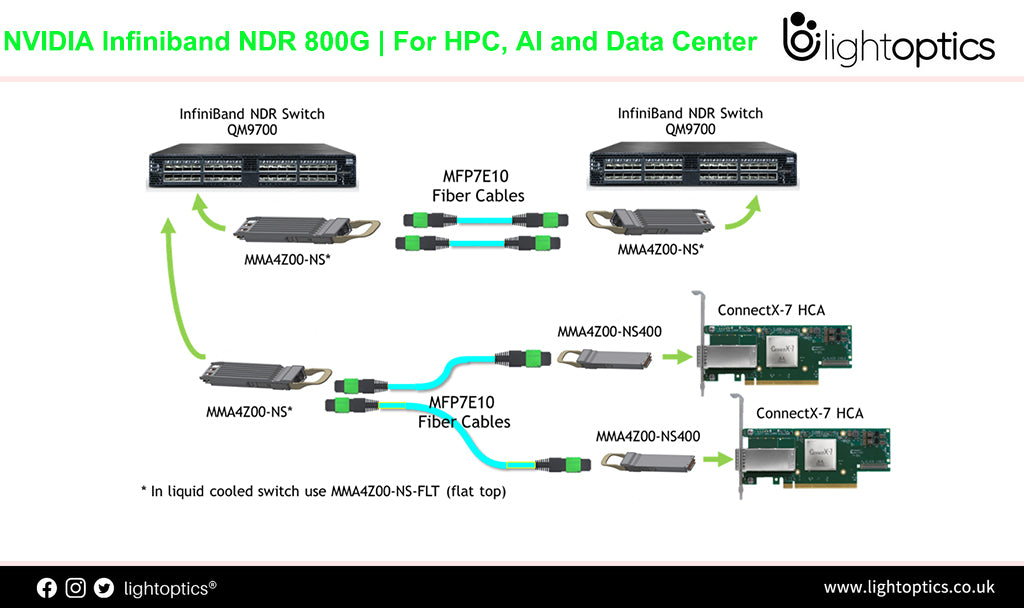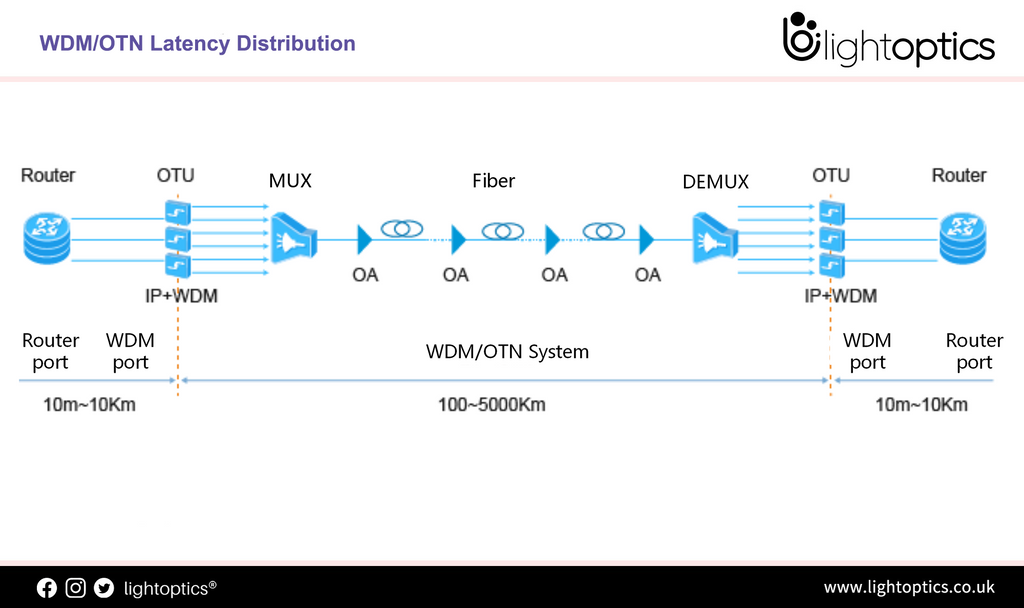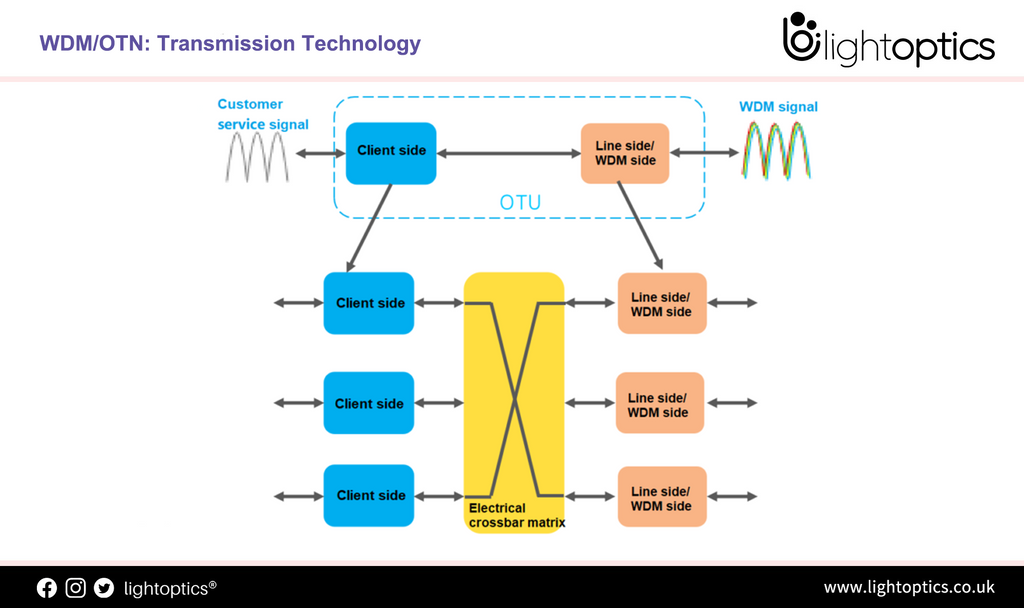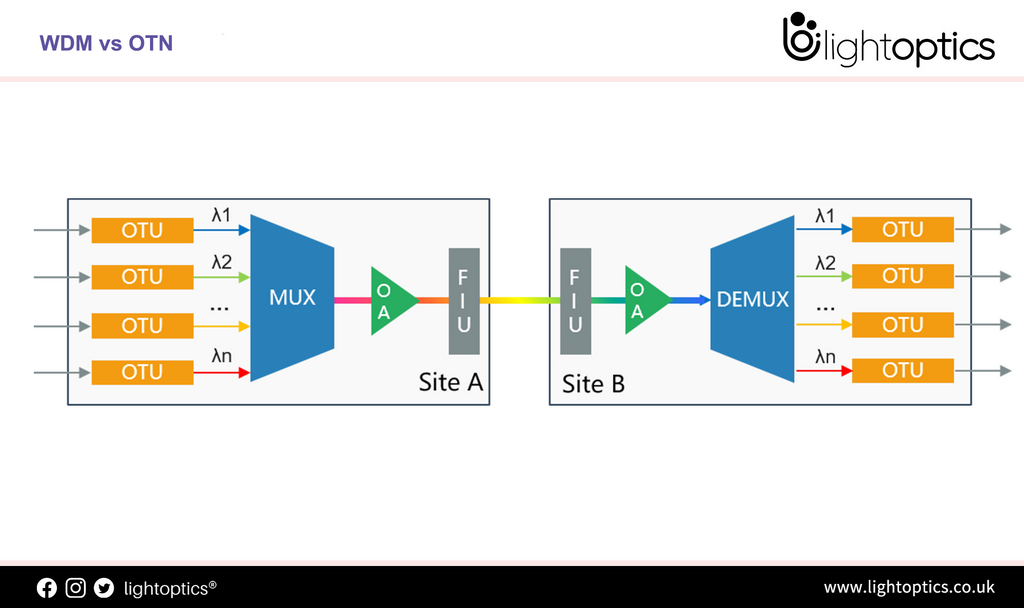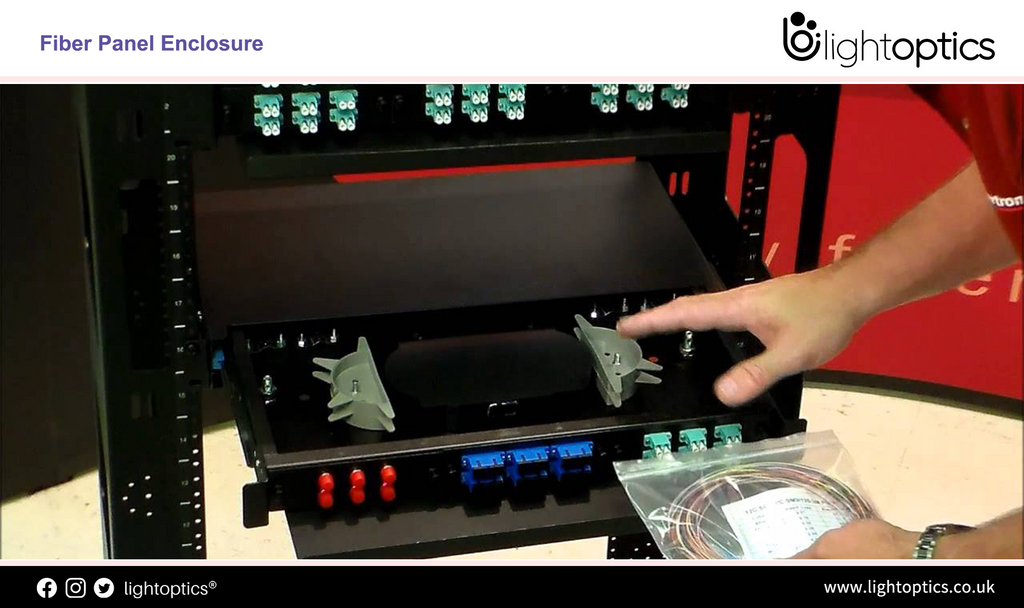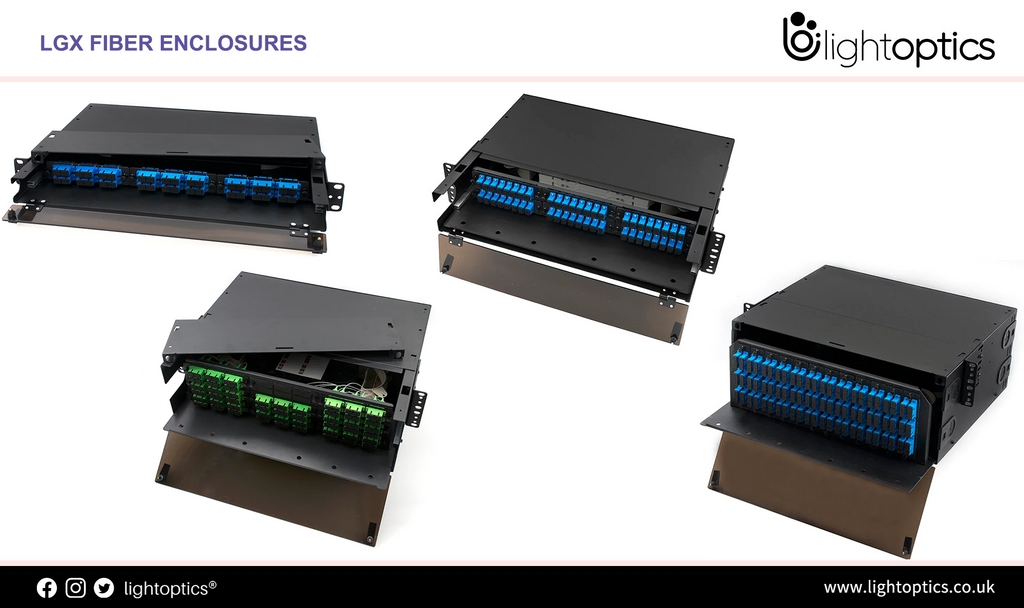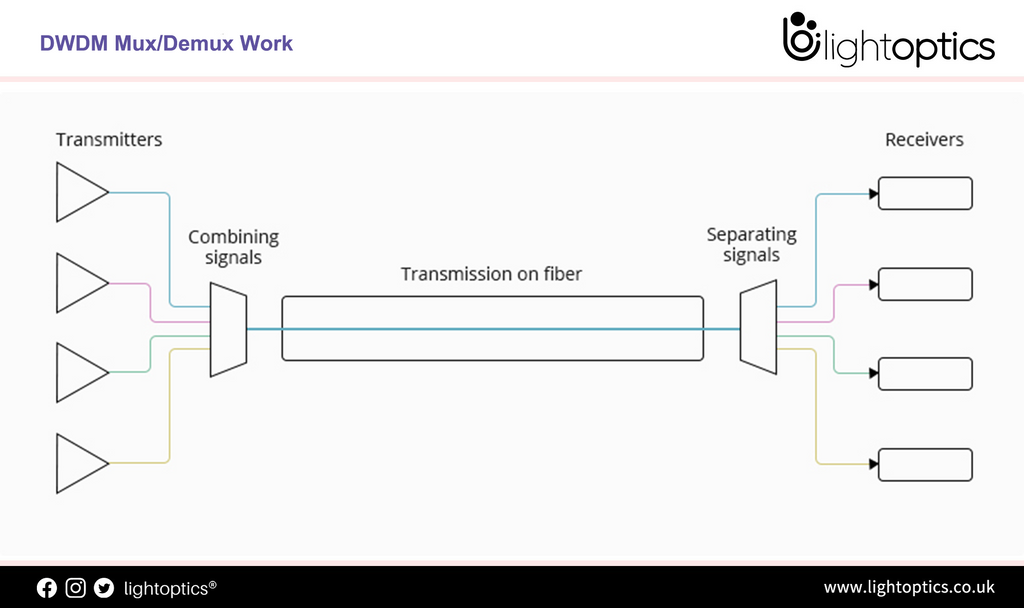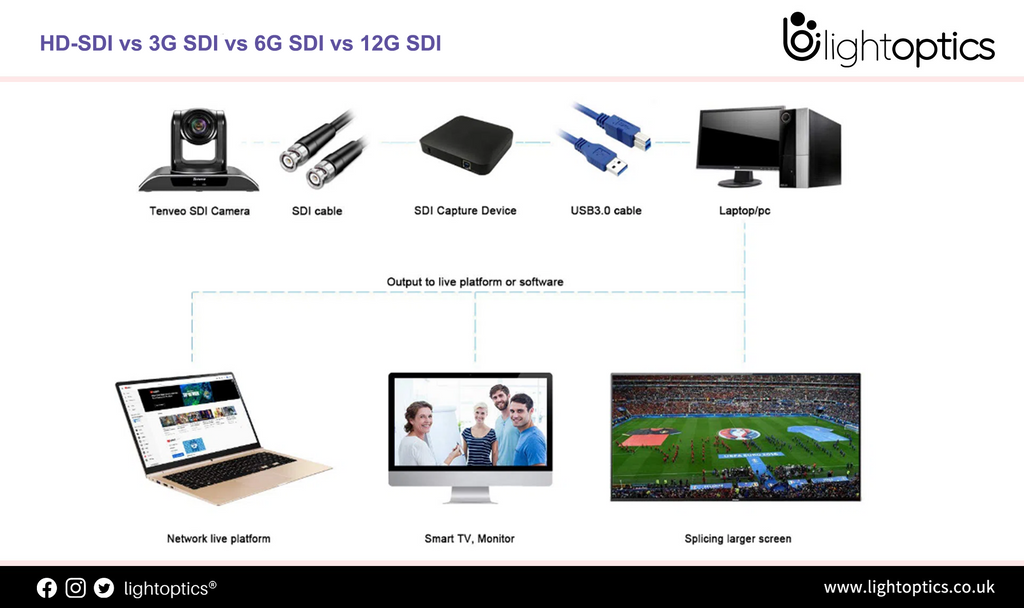-
200G QSFP56 AOC Introduction and Application
What is a 200G QSFP56 AOC? 200G QSFP56 AOC is a QSFP56 VCSEL (Vertical Cavity Surface-Emitting Laser) based active optical cable (AOC) designed for use in 200Gb/s Ethernet or InfiniBand HDR systems. The 200G QSFP56 AOC offers high-end port density and configurability, and a much longer reach than passive copper cables in the data centers. 200G QSFP56 AOC has a standard SFF-8665 compliant QSFP56... -
NVIDIA's New Ethernet Networking Platform for HPC, AI and Data Center
NVIDIA's New Ethernet Networking Platform for HPC, AI and Data Center InfiniBand switch Name PN Description 400G InfiniBand switch, managed MQM9700-NS2F 64-ports 400Gb/s, 32 OSFP ports, managed, power-to-connector(P2C) airflow (forward) 400G InfiniBand switch, managed MQM9700-NS2R 64-ports 400Gb/s, 32 OSFP ports, managed, connector-to-power(C2P) airflow (reverse) 400G InfiniBand switch, unmanaged MQM9790-NS2F 64-ports 400Gb/s, 32 OSFP ports, unmanaged, P2C airflow (forward) 400G InfiniBand switch, unmanaged MQM9790-NS2R 64-ports 400Gb/s, 32 OSFP ports, unmanaged,... -
Migrating from GPON to XGS-PON and NG-PON2
Broadband technology and broadband markets are constantly evolving. Service providers need an optical distribution network (ODN) which not only supports today’s requirements for data, video and voice with QoS, SLA agreements and security, but also tomorrow’s requirements. Today bandwidth scalability from GPON (2.5 Gigabit downstream/1.25 Gigabit upstream) to XGS-PON (10 Gbps upstream and downstream) and even NGPON2 (40 Gbps upstream and downstream) services are... -
Introduce for WDM/OTN Latency
Introduce for WDM/OTN Latency What does WDM mean? WDM stands for wavelength division multiplexing, a technique used to send multiple channels of data over the same cable in fiber-optic transmission. Fiber-optic cables transmit data via pulses of light, which contain a range of wavelengths or colors. WDM enables each pulse to carry data from different sources on multiple wavelengths. With WDM, a single fiber... -
WDM/OTN: Transmission Technology
WDM/OTN: Transmission Technology Modern optical technologies reach the Terabit range and revolutionize the network world. The course takes an inventory and shows development trends. It discusses the major changes in the fields of optical fiber types, access, and backbone, as well as optical networks and network protection and gives a compact overview of the innovative potential of high-performance, optical technologies. WDM (Wavelength Division Multiplexing)... -
Difference between WDM vs OTN
Difference between WDM vs OTN The constant demand for Internet-based services makes operator networks an even more important social infrastructure. Operators need to deliver higher speed, higher capacity and higher reliability networks. Therefore, two technology come into our sight: DWDM vs. OTN, the technologies that can expand existing bandwidth. To learn more about them and the difference between OTN and DWDM, this article may... -
The Benefits of Fiber Panel Enclosures
The Benefits of Fiber Panel Enclosures What is a Fiber Panel Enclosure? The fiber panel enclosure is the nerve center for any high-density network. Also called a fiber optic distribution panel, the fiber panel enclosure is your best solution to organize and manage fiber optic cables within an enterprise network. A single fiber enclosure hardware assembly contains a set number of ports to connect incoming... -
How to choose Fiber Patch Panels?
How to choose Fiber Patch Panels? Fiber patch panel, also called fiber enclosure, is used as a cost-effective method of fiber optic cable management and maintenance in today’s data center. With a fiber patch panel, installers can quickly do the cabling just by making changes to cables on the patch panel itself. What’s more, the patch panel also allows for easier cable management and... -
Factors to Consider When Choosing the DWDM Mux/Demux
Factors to Consider When Choosing the DWDM Mux/Demux Line Port Line port is one of the important ports for each DWDM channel multiplexing and demultiplexing. There are dual fiber and single fiber types of line port, and which to select depends on the use of DWDM wavelengths. As for single-fiber DWDM Mux/Demux, it requires only one single optical fiber to transmit the signals. However,... -
HD-SDI vs 3G SDI vs 6G SDI vs 12G SDI
HD-SDI vs 3G SDI vs 6G SDI vs 12G SDI SDI-Serial Digital Interface, widely used in SDI encoders, SDI converters and other equipment, which has been applied to radio and television fields, security monitoring. And we have witnessed the development of the video standard with the ultra high definition standard from SD-SDI, HD-SDI to 3G-SDI, 6G-SDI, 12G-SDI and 24G-SDI. At the same time, it...
Customer Service: sales@lightoptics.co.uk
Shopping Cart
0
Close
Your Cart
Your cart is currently empty.

















